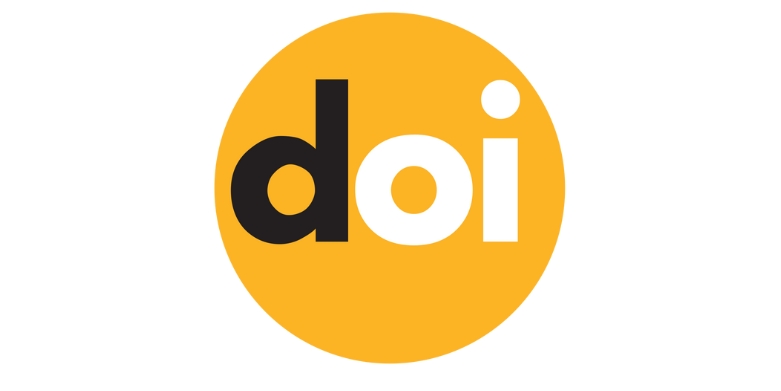Investigating the relationship between screen viewing and social skills and language development in children
DOI:
https://doi.org/10.63053/ijhes.133Keywords:
Screen, Language Development, Social Skills, ChildrenAbstract
Introduction: Childhood, as the most sensitive stage of human development, plays a decisive role in the formation of language and social skills. With the spread of digital technologies, the use of screens has become an integral part of children's lives. This study aimed to investigate the relationship between the duration of screen time and the language development and social skills of 4- to 8-year-old children in Zanjan.
Method: This study was fundamental in terms of purpose and descriptive-correlational in terms of method. The statistical population included all 4- to 8-year-old children in kindergartens and educational centers in Zanjan in the academic year 2023-2024, from which 160 individuals were selected using the convenience sampling method. The research tools included the Screen Time Questionnaire (Vizcaino et al., 2019), the Language Development Questionnaire (Faramarzi et al., 2018), and the Matson Social Skills Questionnaire (1938). The data were analyzed using the Pearson correlation coefficient and linear regression in SPSS version 26 software.
Findings: The results showed that there is an inverse and significant relationship between the duration of screen use and children's language development (*r* = -0.56, *p* < 0.01). Also, a positive and significant relationship was observed between the duration of screen use and social skills (both healthy and unhealthy) (*r* = 0.55, *p* < 0.01). Regression analysis showed that screen time predicted 30% of the variation in language development and 27% of the variation in social skills.
Conclusion: The findings indicate that increased screen time is associated with reduced language development and changes in children's social skills. It is suggested that parents and educators help children develop optimally by regulating media programs and encouraging face-to-face interactions. It is also necessary to hold educational workshops to educate families about the effects of screens
References
• Ahmed, N., Ishtiak, A. S. M., Rozario, M. F. K., Bonna, A. S., Alam, K. P., Hossan, M. E., ... & Kakoly, N. S. (2023). Factors associated with low childhood immunization coverage among Rohingya refugee parents in Cox's Bazar, Bangladesh. PLoS One, 18(4), e0283881.
• Amini Roodposhti, Z., & Saleh, Z. (2020). The role of social skills in preventing drug addiction among adolescents. Advanced Biomedical Research, 9(1), 112-120.
• Bakht, M. B., & Zakar, R. (2022). Comparison of sources of communication for childhood immunization: Evidence from PDHS 2017–18. Pakistan Journal of Medical & Health Sciences, 16(2), 23.
• Bayat, M., Narimani, A., Didar, F., Soraya Taifeh Dalai, K., & Sabetroo, M. (2023). Evaluation of the prevalence of attention deficit/hyperactivity disorder (ADHD) and related demographic factors in students in 12th class of Ardabil in the academic year 2016-2018. Journal of School Psychology, 12(2), 33-44.
• Beaumont, R., Walker, H., Weiss, J., & Sofronoff, K. (2021). Randomized controlled trial of a video gaming-based social skills program for children on the autism spectrum. Journal of Autism and Developmental Disorders, 51, 3637-3650.
• Castaño-Vinyals, G., Sadetzki, S., Vermeulen, R., Momoli, F., Kundi, M., Merletti, F., ... & Cardis, E. (2022). Wireless phone use in childhood and adolescence and neuroepithelial brain tumors: Results from the international MOBI-Kids study. Environment International, 160, 107069.
• Darvish, M. (2009). Validation of the Matson Social Skills Questionnaire in Iranian population. Iranian Journal of Psychiatry, 4(1), 23-35.
• Donnelly, S., & Kidd, E. (2021). The longitudinal relationship between conversational turn-taking and vocabulary growth in early language development. Child Development, 92(2), 609-625.
• Faramarzi, S., et al. (2018). Development and validation of the Language Development Scale for Persian-speaking children. Journal of Child Language Development, 12(3), 45-67.
• Gao, L., Wu, Y., Zhu, J., Wang, W., & Wang, Y. (2022). Associations of sleep duration with childhood obesity: Findings from a national cohort study in China. Global Health Journal, 6(3), 149-155.
• Hardell, L., & Moskowitz, J. M. (2023). A critical analysis of the MOBI-Kids study of wireless phone use in childhood and adolescence and brain tumor risk. Reviews on Environmental Health, 38(3), 409-421.
• Iverson, J. M. (2021). Developmental variability and developmental cascades: Lessons from motor and language development in infancy. Current Directions in Psychological Science, 30(3), 228-235.
• Khusnidakhon, K. (2021). The importance of enhancing social skills of preschoolers. European Scholar Journal, 2(3), 74-78.
• Lukitowati, S., Suwarso, W. A., & Varanida, D. (2022). The patterns of early childhood media consumption in the digital television era. Komunika: Jurnal Dakwah and Communication, 16(2), 151-164.
• Matson, J. L., et al. (1938). Social Skills Measure for Children and Adolescents. Journal of Child Psychology, 15(2), 112-130.
• Mustoip, S., Al Ghozali, M. I., As, U. S., & Sanhaji, S. Y. (2023). Implementation of character education through children's language development in elementary schools. IJECA (International Journal of Education and Curriculum Application), 6(2), 91-100.
• Naeim, M., Alafasghari, F., Didar, F., Savabi Niri, V., Bayat, M., & Golestani, E. (2021). Comparison of performance on normal the Benton Visual-Spatial Perception Test in students with special and regular learning disabilities. Journal of Learning Disabilities, 11(1), 80-90.
• Reilly, S., & McKean, C. (2023). Creating the conditions for robust early language development for all—Part 1: Evidence-informed child language surveillance in the early years. International Journal of Language & Communication Disorders, 58(6), 2222-2241.
• Rithipukdee, N., & Kusol, K. (2022). Factors associated with the suspected delay in the language development of early childhood in southern Thailand. Children, 9(5), 662.
• Schwarzer, C., Grafe, N., Hiemisch, A., Kiess, W., & Poulain, T. (2022). Associations of media use and early childhood development: Cross-sectional findings from the LIFE Child study. Pediatric Research, 91(1), 247-253.
• Soltani Koohbanani, S. (2023). Psychometric evaluation of the Screen Time Questionnaire in Iranian children [Unpublished master's thesis]. Mashhad University of Medical Sciences, Iran.
• Sørlie, M. A., Hagen, K. A., & Nordahl, K. B. (2021). Development of social skills during middle childhood: Growth trajectories and school-related predictors. International Journal of School & Educational Psychology, 9(Suppl. 1), S69-S87.
• Sun, J., Singletary, B., Jiang, H., Justice, L. M., Lin, T. J., & Purtell, K. M. (2022). Child behavior problems during COVID-19: Associations with parent distress and child social-emotional skills. Journal of Applied Developmental Psychology, 78, 101375.
• Sundqvist, A., Koch, F. S., Birberg Thornberg, U., Barr, R., & Heimann, M. (2021). Growing up in a digital world—Digital media and the association with the child's language development at two years of age. Frontiers in Psychology, 12, 569920.
• Wisniewski, P., Bowman, N. D., Diseraks, C., & Wharton, A. (2019). Screen Time Questionnaire for Children [Unpublished measurement instrument].
• Yousefi, F., & Khair, M. (2009). Reliability and validity of Matson's Social Skills Scale in high school students. Journal of Educational Psychology, 6(2), 78-92
Downloads
Published
How to Cite
Issue
Section
License
Copyright (c) 2025 Authors

This work is licensed under a Creative Commons Attribution 4.0 International License.
The journal is licensed under a Attribution 4.0 International (CC BY 4.0).
You are free to:
- Share — copy and redistribute the material in any medium or format for any purpose, even commercially.
- Adapt — remix, transform, and build upon the material for any purpose, even commercially.
- The licensor cannot revoke these freedoms as long as you follow the license terms.
Under the following terms:
- Attribution - You must give appropriate credit , provide a link to the license, and indicate if changes were made . You may do so in any reasonable manner, but not in any way that suggests the licensor endorses you or your use.
- No additional restrictions - You may not apply legal terms or technological measures that legally restrict others from doing anything the license permits.












